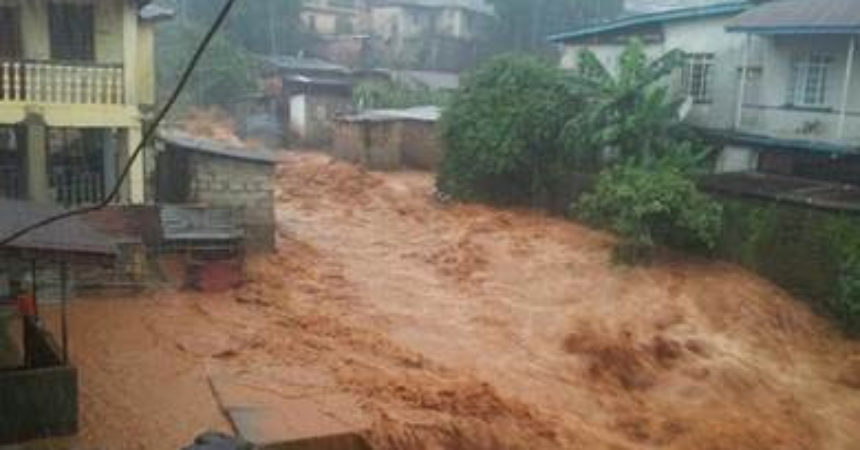
Hundreds feared dead in Sierra Leone mudslide linked to climate change
Special to the Outlook
A fast-moving wall of mud, loosened by heavy overnight rains, has buried over 300 Sierra Leoneans, many of them sleeping children, during a torrential downpour early Monday. The deluge was foreseen by climate change experts.
Videos posted by local residents show an angry flood of dark orange mud rushing down a steep street in the capital. In some shots, people waist and chest deep in water are seen desperately trying to cross the road.
Early estimates put the number left homeless from the hilltop area of Regent at 2,000 while over 100 properties at the foot of Sugar Loaf mountain were reported submerged or collapsed before sunrise, said the Red Cross.
Residents of the Kaningo neighborhood on the west side of the capital Freetown were seen collecting the dead even as floodwaters had yet to recede. The neighborhood was among the hardest hit by rampaging floodwaters, which washed away a bridge and left homes caked in mud and debris.
Two years ago, a member of the Africa Research Institute, Jamie Hitchen, investigated the country’s flood cycle and its impact on the 61 or more unplanned settlements, many of which are perched on the farthest land masses before the sea.
“Kroo Bay, one of the largest coastal slums with an estimated population of 6,000, has flooded every year since 2008”, Hitchen observed.
“The floods were not unexpected,” Hitchen maintained. Increasingly frequent floods disproportionately affect those living in “at risk” communities.
A recent report by the USAID Climate Change Risk Profile highlighted the country’s environmental threat.
“Sierra Leone faces multiple risks from climate change that threaten key economic sectors and increase the potential for wider environmental degradation.
“Projected increases in the intensity of rainfall events will exacerbate the existing impacts of floods, which include loss of life and property as well as damage to critical service and transport infrastructure. Floods account for 85 percent of disaster-related mortality in the country, followed by landslides and storms.”
Meanwhile, a hydroelectric power plant that promised to “light up” Freetown has barely delivered the much-needed 60MW of power intended. This month, a UK company has taken over construction of Bumbuna II, a second power plant. Estimated year of completion: 2030.
GLOBAL INFORMATION NETWORK creates and distributes news and feature articles on current affairs in Africa to media outlets, scholars, students and activists in the U.S. and Canada. Our goal is to introduce important new voices on topics relevant to Americans, to increase the perspectives available to readers in North America and to bring into their view information about global issues that are overlooked or under-reported by mainstream media.







